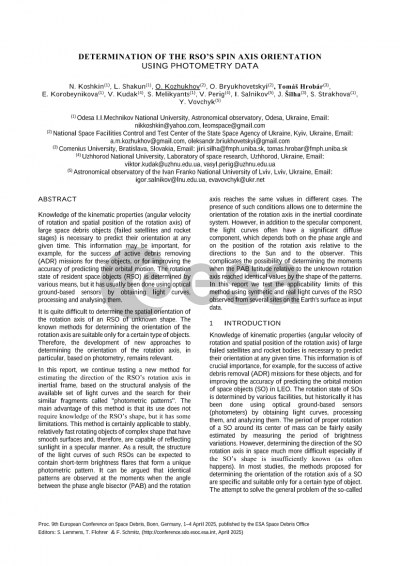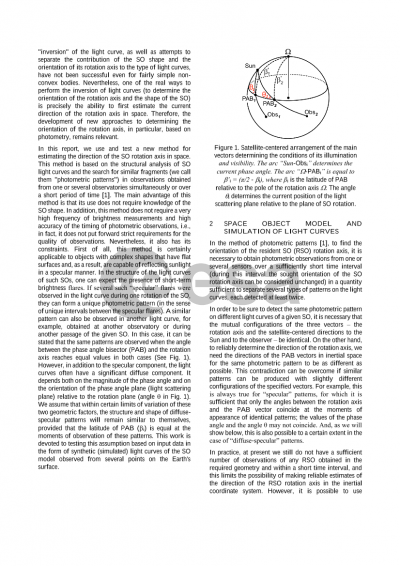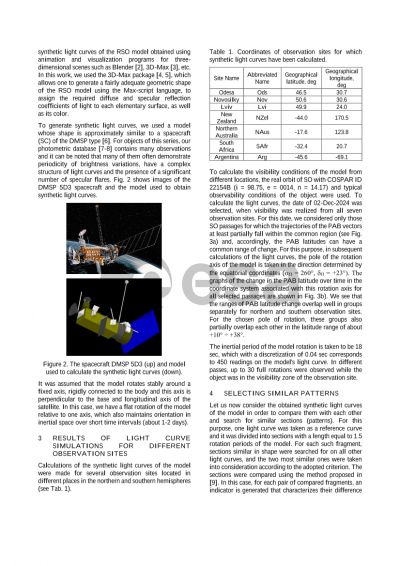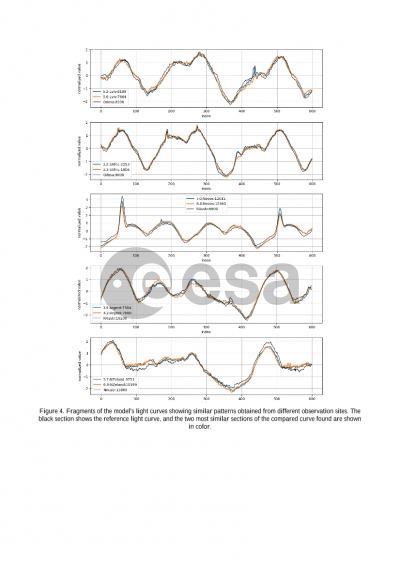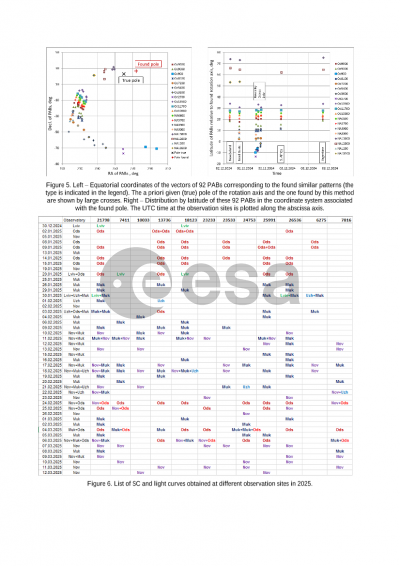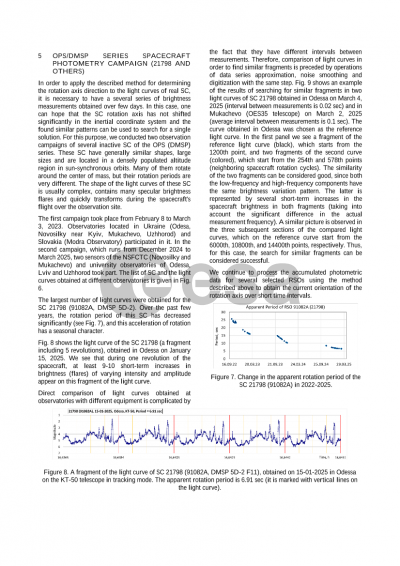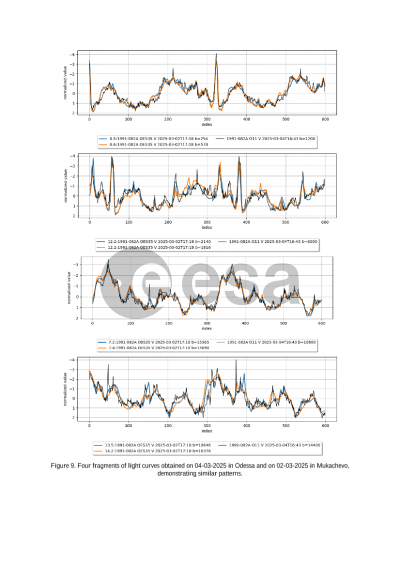Document details

Abstract
Knowledge of the kinematic properties (angular velocity of rotation and spatial position of the rotation axis) of large space debris objects (failed satellites and rocket stages) is necessary to predict their orientation at any given time. This information may be important, for example, for the success of active debris removing (ADR) missions for these objects, or for improving the accuracy of predicting their orbital motion. The rotation state of resident space objects (RSO) is determined by various means, but it has usually been done using optical ground-based sensors by obtaining light curves, processing and analyzing them.
It is quite difficult to determine the spatial orientation of the rotation axis of an RSO of unknown shape. The known methods for determining the orientation of the rotation axis are suitable only for a certain type of objects. Therefore, the development of new approaches to determining the orientation of the rotation axis, in particular, based on photometry, remains relevant.
In this report, we continue testing a new method for estimating the direction of the RSO’s rotation axis in inertial frame, based on the structural analysis of the available set of light curves and the search for their similar fragments called "photometric patterns". The main advantage of this method is that its use does not require knowledge of the RSO’s shape, but it has some limitations. This method is certainly applicable to stably, relatively fast rotating objects of complex shape that have smooth surfaces and, therefore, are capable of reflecting sunlight in a specular manner. As a result, the structure of the light curves of such RSOs can be expected to contain short-term brightness flares that form a unique photometric pattern. It can be argued that identical patterns are observed at the moments when the angle between the phase angle bisector (PAB) and the rotation axis reaches the same values in different cases. The presence of such conditions allows one to determine the orientation of the rotation axis in the inertial coordinate system. However, in addition to the specular component, the light curves often have a significant diffuse component, which depends both on the phase angle and on the position of the rotation axis relative to the directions to the Sun and to the observer. This complicates the possibility of determining the moments when the PAB latitude relative to the unknown rotation axis reached identical values by the shape of the patterns. In this report we test the applicability limits of this method using synthetic and real light curves of the RSO observed from several sites on the Earth's surface as input data.
Preview
